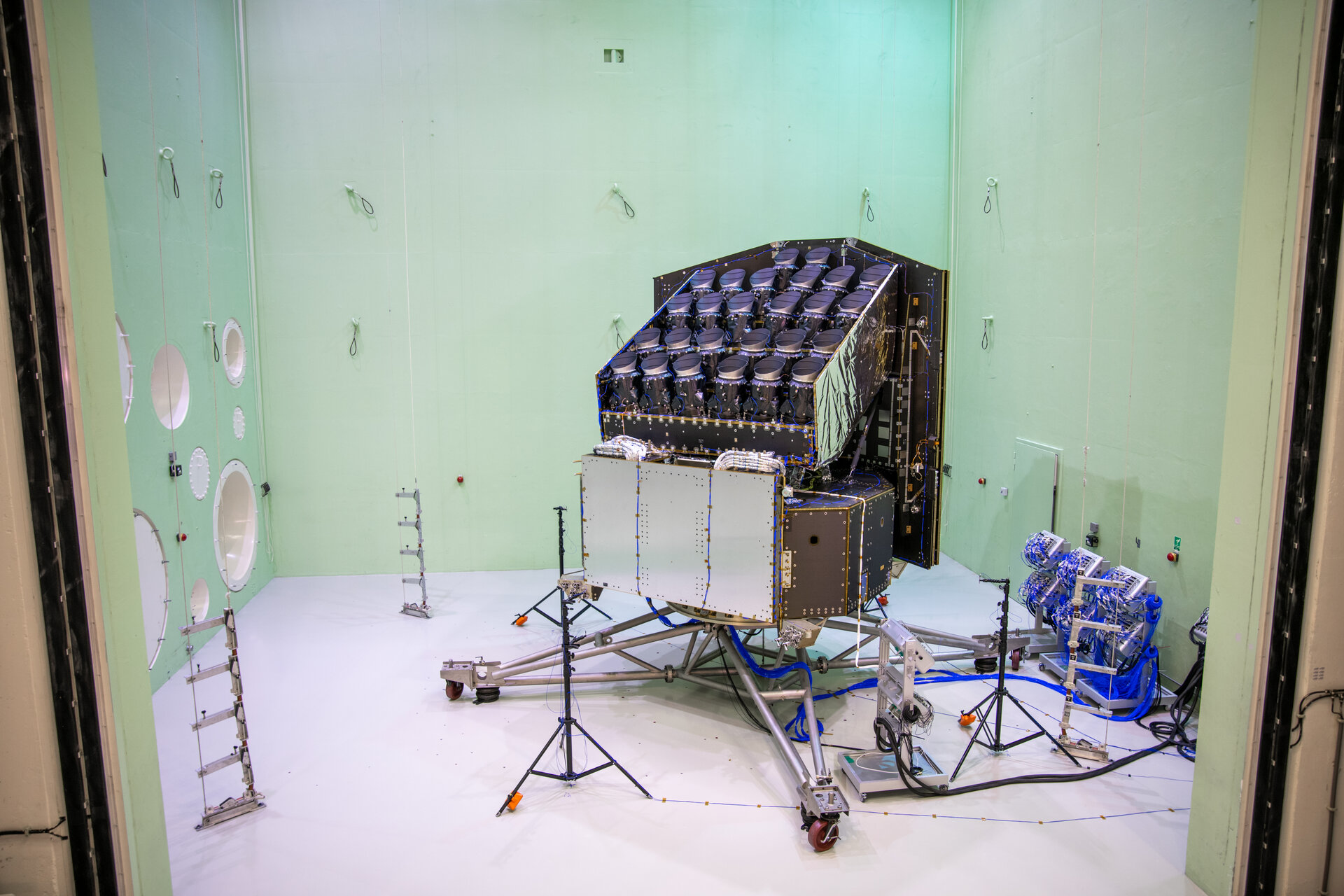Plato’s structural test campaign
From May to August 2023 a structural model of ESA’s next exoplanet mission, Plato, is undergoing a test campaign at ESA’s ESTEC Test Centre, at Noordwijk in the Netherlands. Plato is planned to launch on an Ariane 6 in 2026. During lift-off Plato will have to withstand intense vibrations and immense blasts of noise. To make sure the satellite can survive the start of its journey to space, engineers test its structural integrity beforehand.
Structural model
The version of Plato undergoing these tests is not the satellite that will fly in space, but a detailed structural model used for testing the spacecraft during its development. The series of tests evaluate the qualification limits of the satellite structure to check if it can withstand the launcher’s loads and minimise the risk to the real satellite. Importantly, they also verify the interfaces between different parts, such as the sunshield and the satellite’s main body, and between Plato’s 26 cameras and the optical bench they are mounted on. This campaign was successfully finalised in the beginning of June.
Shake it up
During the first part of the test campaign, Plato’s structural model was placed on top of two shakers, the Multi shaker and the QUAD shaker, to simulate the vibrations encountered during launch. The Multi shaker moved Plato in the left-right and forward-backward directions. The QUAD shaker, pictured below, simulated oscillations in the up-down direction. Together the shakers can test spacecraft up to 10 000 kg for vibrations in three dimensions. This series of tests was essential to make sure Plato can survive the first two minutes of launch, during which the most extreme shocks are encountered.
Acoustic tests
After the shaker test, Plato was moved to the Large European Acoustic Facility (LEAF), the green room in the pictures. In this chamber, the noise of a rocket taking off can be simulated. This large space measures 11 by 9 metres and is 16.4-m high. One wall is equipped with multiple noise horns, that have a similar design as ordinary audio speakers. Nitrogen is shot through the horns and can produce noise up to 156 decibels. Meanwhile Plato itself was ringed by microphones, used to check the acoustic environment surrounding the model. During testing the LEAF’s massive door stays shut and no one is allowed into the chamber: it is surrounded by a 0.5-m-thick layer of concrete to keep the noise in. Plato passed its noise test with flying colours.
Next step: testing the flight model
During the next two years, Plato’s flight model, which is the real spacecraft that will fly into space, will be completed and tested. The flight model will go through various thermal and mechanical tests to make sure Plato will perform well and meet its scientific requirements.






